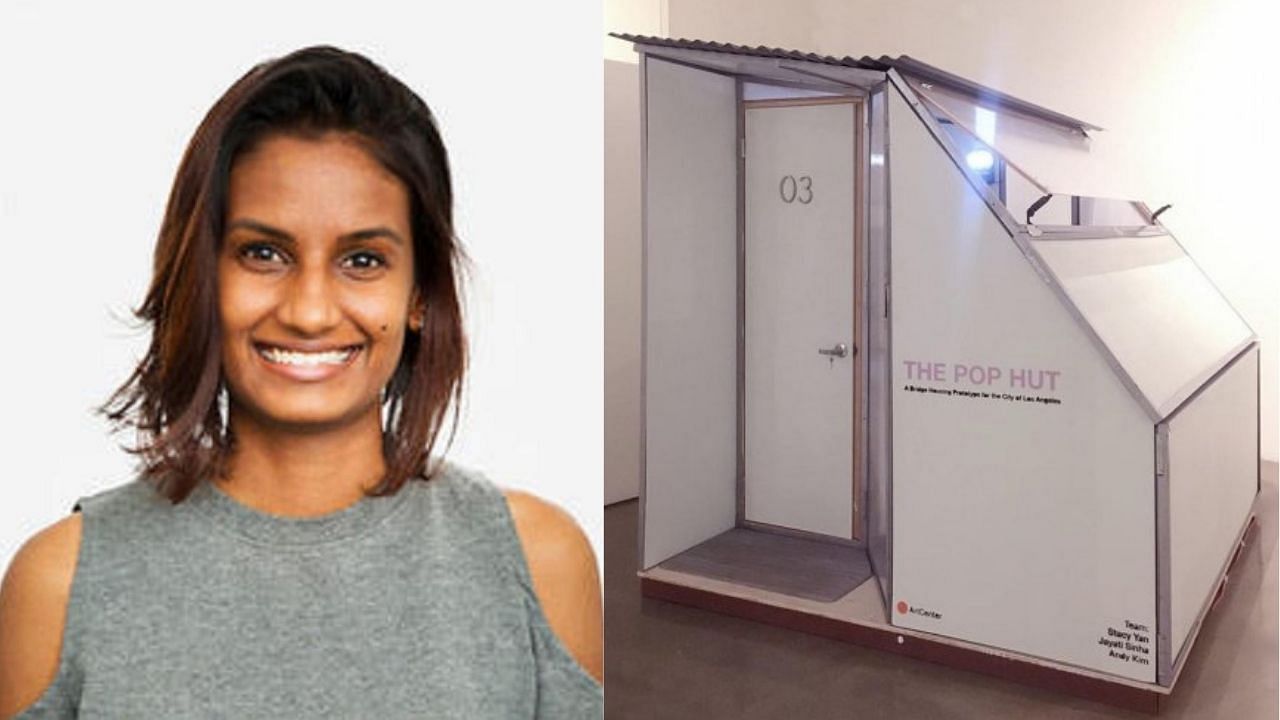
An estimated 1.8 million people in India are homeless. A further 73 million families lack access to decent housing. An Indian physical and visual designer working in the US may have hit upon a feasible solution to this ubiquitous social problem: The Pop Hut.
It is a low-cost housing prototype, which can be quickly deployed during emergencies or set up as temporary shelters for the poor. The flat pack prototype can be easily transported and reassembled as a life-sized home. It is 100 x 96 x 96 inches in size and can accommodate one person.
A lot like home
The Pop Hut is not a bare structure. It exudes the warmth and security of a real home. Jayati Sinha, the designer, explains, “It has a front door with a keyed lock, a door number, and a tiny front stoop complete with a motion-activated porch light. Inside the hut, we used colours and transparency as therapeutic tools to make users feel secure and cared for.”
She has also provided open shelves on the inside walls for occupants to store belongings and create their aesthetics — to help them regain a sense of belongingness, she notes.
The prototype is made of birch plywood, polycarbonate panels (translucent material), aluminium tubes (for frames), and honeycomb panels (for insulation). The materials are not the highlight of the concept, she clarifies. They can be customised depending on the need, weather conditions, and what is locally available.
But the panel design is of consequence. “The flatpacked design can be expanded and contracted into different sizes at the time of reassembly because of the panel design,” she explains. The hut can be assembled in 40-50 minutes.
Made in US, global in use
In April 2018, Los Angeles Mayor Eric Garcetti consulted a number of architecture and design schools to design ‘bridge housing’, a temporary shelter for the homeless. An estimated 5,53,742 people in the USA experience homelessness on a given night, she points out. Along with ArtCenter at Pasadena, California, Jayati participated in the project as an environment designer.
She has studied product design in India and environment design in the USA. She has worked with design and innovation companies like Fuseproject, and Fjord in the USA.
“It took us about six months to develop this prototype. It involved a lot of field research to understand the demographics (of the end-users), and the conditions under which such houses could be set up. The teams came up with a few concepts and we kept refining them until it was time to build it in real size,” recalls Jayati.
Ask Jayati when these homes will be available for deployment and she says: “This is a prototyped solution. If developers are interested in investing and building homes using this prototype, I would love to work with them and make this a reality.”
Jayati considers this project “extraordinary and attractive” as it can be transferred to any country in the world, facing any version of homelessness. “My hope is to inspire people in India to bring change using this emergency temporary housing initiative,” she says.
Highlights of the Pop Hut
Flatpack for mobility and deployment.
Corrugated sheets that are strong but not heavy.
Allows natural ventilation and light.
Slanted roof drains water, can be used to install solar panels.
Open wall shelves to store belongings.
Who is it meant for?
These huts can be set up anywhere to provide a safe environment for the underprivileged, victims of natural disasters, refugees, disaster response forces, or armed personnel.
How long can it last?
The hut is not built as a permanent solution to housing. It can be used for a few months to up to a year, depending on the materials used, says Jayati.
How much does it cost?
“The prototype was built for about $2,000 (about Rs 1,50,000). But if it is made in bulk and using lower-cost materials in India, it can come cheaper,” says Jayati.